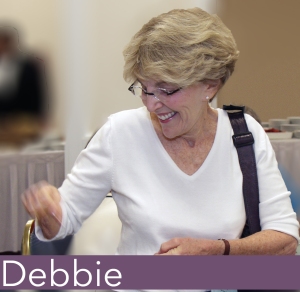Deborah Sonnnenstrahl Blumenson
My first encounter with Betty is not known to many people but it was unique. Being a greenhorn without any signing skills when I first came to Gallaudet in the fall of 1954, I certainly was a confused, clumsy and clueless 18-year-old woman. As fate would have it, I bumped onto her on a stairway during my first or so week and immediately asked her where she came from the best way I knew how in signs. That was moving my lips and waving my right arm and rocking my hand forth and back. She took a pity on me and spoke carefully “Chicago” instead of brushing me off. Oh she can talk! I was so relieved! It turned out that she also was new to the Deaf world as she had some residual hearing and was recently transferred from a hearing college. However, sign language was not new to her as she had deaf parents. Would you believe it that I kept on forgetting and did ask her a couple times whenever I saw her? We had a good laugh about our first meeting many years later. The moral of this story is to reflect the goodness of her heart which never changed throughout her lifetime.
How was I to know that this woman would take a leadership role in establishing a new art movement which shook the art world, particularly the Deaf world? But before I go into details regarding the new art movement, De’VIA, I must admit that I was envious of her flawless, effortless, and graceful drawings during our college days. We both had an exceptional art/art history instructor, Mrs. Elva Loe. Since Betty was one year ahead of me we were never classmates, yet we both shared our love for visual arts. We took her art and art history classes at different times. As for me I couldn’t learn how to draw like her to save my life! I so admired her art work and it was a shock when her style changed in the 70s– which I couldn’t stomach. When I first saw her De’VIA art show (1972) at Gallaudet Art Department, where she bared her soul and told the whole world how it was being Deaf in a Hearing world, I felt queasy. Art objects— which usually included flowers, landscapes, animals, and portraits— were absent in this show. This show was DIFFERENT! Instead of the usual themes she showed the oppression, the injustice, the audism and the despotism which she and many of us had experienced. Betty’s subject matter/theme wasn’t for me! No way! Yet, despite myself, I knew Betty was right. It was our responsibility to educate the public! The rest is history. People, both Deaf and hearing, took notice as her work took us by storm. People talked about it. People began to realize how difficult our lives had been. People began to examine themselves.
And Deaf artists began to transfer their hidden emotions to their canvases. The Deaf world (and the Deaf art community) was never the same.
All this happened because she marched to a different drummer.
Thank you, Betty!
Deborah M (Sonnenstrahl) Blumenson, PhD
Boynton Beach, FL
April 4, 2014


